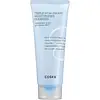What's inside
What's inside
 Key Ingredients
Key Ingredients

 Benefits
Benefits

 Concerns
Concerns

 Ingredients Side-by-side
Ingredients Side-by-side

Glycine Soja Oil
EmollientCetyl Ethylhexanoate
EmollientSorbeth-30 Tetraoleate
EmulsifyingIsododecane
EmollientOlea Europaea Fruit Oil
MaskingCamellia Japonica Seed Oil
EmollientHydrogenated Coconut Oil
EmollientOctyldodecanol
EmollientPolybutene
Caprylic/Capric Triglyceride
MaskingWater
Skin ConditioningTocopherol
AntioxidantSalvia Officinalis Oil
MaskingPanax Ginseng Seed Oil
EmollientArtemisia Vulgaris Oil
PerfumingOcimum Basilicum Oil
MaskingCorylus Avellana Seed Oil
EmollientNigella Sativa Seed Oil
EmollientButylene Glycol
HumectantPanax Ginseng Berry Extract
Skin ConditioningGlycerin
Humectant1,2-Hexanediol
Skin ConditioningMethylpropanediol
SolventPanax Ginseng Root Extract
EmollientEthyl Hexanediol
SolventPanax Ginseng Extract
AntioxidantPanax Ginseng Leaf/Stem Extract
Skin ConditioningEthylhexylglycerin
Skin ConditioningGlycine Soja Oil, Cetyl Ethylhexanoate, Sorbeth-30 Tetraoleate, Isododecane, Olea Europaea Fruit Oil, Camellia Japonica Seed Oil, Hydrogenated Coconut Oil, Octyldodecanol, Polybutene, Caprylic/Capric Triglyceride, Water, Tocopherol, Salvia Officinalis Oil, Panax Ginseng Seed Oil, Artemisia Vulgaris Oil, Ocimum Basilicum Oil, Corylus Avellana Seed Oil, Nigella Sativa Seed Oil, Butylene Glycol, Panax Ginseng Berry Extract, Glycerin, 1,2-Hexanediol, Methylpropanediol, Panax Ginseng Root Extract, Ethyl Hexanediol, Panax Ginseng Extract, Panax Ginseng Leaf/Stem Extract, Ethylhexylglycerin
Water
Skin ConditioningGlycerin
HumectantStearic Acid
CleansingMyristic Acid
CleansingLauric Acid
CleansingPotassium Hydroxide
BufferingPalmitic Acid
EmollientPotassium Cocoyl Glycinate
Coco-Glucoside
CleansingGlyceryl Stearate
EmollientParfum
MaskingPolyquaternium-7
Acrylates/C10-30 Alkyl Acrylate Crosspolymer
Emulsion StabilisingSodium Cocoyl Isethionate
CleansingArachidic Acid
CleansingDisodium EDTA
1,2-Hexanediol
Skin ConditioningOleic Acid
EmollientSodium Benzoate
MaskingQuillaja Saponaria Bark Extract
CleansingCitric Acid
BufferingButylene Glycol
HumectantPanthenol
Skin ConditioningHyaluronic Acid
HumectantEthylhexylglycerin
Skin ConditioningHydrolyzed Hyaluronic Acid
HumectantSodium Hyaluronate
HumectantWater, Glycerin, Stearic Acid, Myristic Acid, Lauric Acid, Potassium Hydroxide, Palmitic Acid, Potassium Cocoyl Glycinate, Coco-Glucoside, Glyceryl Stearate, Parfum, Polyquaternium-7, Acrylates/C10-30 Alkyl Acrylate Crosspolymer, Sodium Cocoyl Isethionate, Arachidic Acid, Disodium EDTA, 1,2-Hexanediol, Oleic Acid, Sodium Benzoate, Quillaja Saponaria Bark Extract, Citric Acid, Butylene Glycol, Panthenol, Hyaluronic Acid, Ethylhexylglycerin, Hydrolyzed Hyaluronic Acid, Sodium Hyaluronate
 Reviews
Reviews

Ingredients Explained
These ingredients are found in both products.
Ingredients higher up in an ingredient list are typically present in a larger amount.
1,2-Hexanediol is a synthetic liquid and another multi-functional powerhouse.
It is a:
- Humectant, drawing moisture into the skin
- Emollient, helping to soften skin
- Solvent, dispersing and stabilizing formulas
- Preservative booster, enhancing the antimicrobial activity of other preservatives
Butylene Glycol (or BG) is used within cosmetic products for a few different reasons:
Overall, Butylene Glycol is a safe and well-rounded ingredient that works well with other ingredients.
Though this ingredient works well with most skin types, some people with sensitive skin may experience a reaction such as allergic rashes, closed comedones, or itchiness.
Learn more about Butylene GlycolEthylhexylglycerin (we can't pronounce this either) is commonly used as a preservative and skin softener. It is derived from glyceryl.
You might see Ethylhexylglycerin often paired with other preservatives such as phenoxyethanol. Ethylhexylglycerin has been found to increase the effectiveness of these other preservatives.
Glycerin is already naturally found in your skin. It helps moisturize and protect your skin.
A study from 2016 found glycerin to be more effective as a humectant than AHAs and hyaluronic acid.
As a humectant, it helps the skin stay hydrated by pulling moisture to your skin. The low molecular weight of glycerin allows it to pull moisture into the deeper layers of your skin.
Hydrated skin improves your skin barrier; Your skin barrier helps protect against irritants and bacteria.
Glycerin has also been found to have antimicrobial and antiviral properties. Due to these properties, glycerin is often used in wound and burn treatments.
In cosmetics, glycerin is usually derived from plants such as soybean or palm. However, it can also be sourced from animals, such as tallow or animal fat.
This ingredient is organic, colorless, odorless, and non-toxic.
Glycerin is the name for this ingredient in American English. British English uses Glycerol/Glycerine.
Learn more about GlycerinWater. It's the most common cosmetic ingredient of all. You'll usually see it at the top of ingredient lists, meaning that it makes up the largest part of the product.
So why is it so popular? Water most often acts as a solvent - this means that it helps dissolve other ingredients into the formulation.
You'll also recognize water as that liquid we all need to stay alive. If you see this, drink a glass of water. Stay hydrated!
Learn more about Water